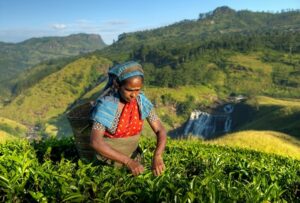Quinoa is a highly nutritious, gluten-free grain-like seed native to the Andes region of South America. It is a small beige seed with a light and fluffy texture when cooked. Quinoa has a mild and slightly nutty flavour. It can be cooked in unsalted water without the addition of fat, oil or salt and valued for its complete protein profile and versatility in culinary applications.
Historical Context
Quinoa has been cultivated for thousands of years by indigenous peoples of the Andes. It played a vital role in their diets and cultural practices.
Production and Sourcing
Quinoa is primarily grown in countries like Peru, Bolivia, and Ecuador. It is sourced through traditional agricultural practices and is now also cultivated in other regions.
Applications
Quinoa can be used in a wide range of dishes, including salads, soups, and as a rice substitute. It is known for its nutty flavor and slightly crunchy texture.
Regulatory Framework
Regulations related to quinoa production and labeling may vary by country. Some regions have established standards for organic and fair-trade quinoa.
Consumer Concerns
Consumers may be interested in issues related to the sustainability of quinoa production, fair trade practices, and its nutritional benefits.
Health and Safety
Quinoa is considered a highly nutritious food, rich in protein, fiber, and various essential nutrients. It is safe for consumption and suitable for a range of dietary needs.
Applicable Products
Quinoa is a versatile ingredient that can be found in various food products, including cereals, pastas, and baked goods.
Alternatives
Other gluten-free grains like rice, millet, and amaranth can serve as alternatives to quinoa, depending on dietary preferences and needs.
Scientific Research
Ongoing research explores the nutritional benefits of quinoa, its potential role in addressing malnutrition, and its adaptability to different climates.
Chemical Properties
Quinoa contains a range of essential nutrients, including protein, fiber, vitamins, and minerals, making it a valuable addition to a balanced diet.
Case Studies
Case studies may focus on the nutritional impact of incorporating quinoa into diets, especially in regions with limited access to diverse food sources.
Future Trends
Future trends in quinoa production and consumption may include sustainable farming practices, increased demand due to its health benefits, and expanded culinary applications.
Opinions
Opinions on quinoa are generally positive, highlighting its nutritional value and versatility. Some express concerns about issues related to fair trade and sustainable farming practices.
Warnings
There are no specific warnings associated with quinoa consumption. However, individuals with allergies should be cautious, as cross-contamination with gluten-containing grains can occur.
Synonyms
Quinoa is known by its common name in most regions and does not have widely recognized synonyms.
Conclusion
Quinoa is a highly nutritious and versatile food source, providing a range of essential nutrients. It has a rich history and continues to be an important component of diets worldwide. Understanding its cultural significance, nutritional benefits, and culinary potential is essential for making informed food choices.







